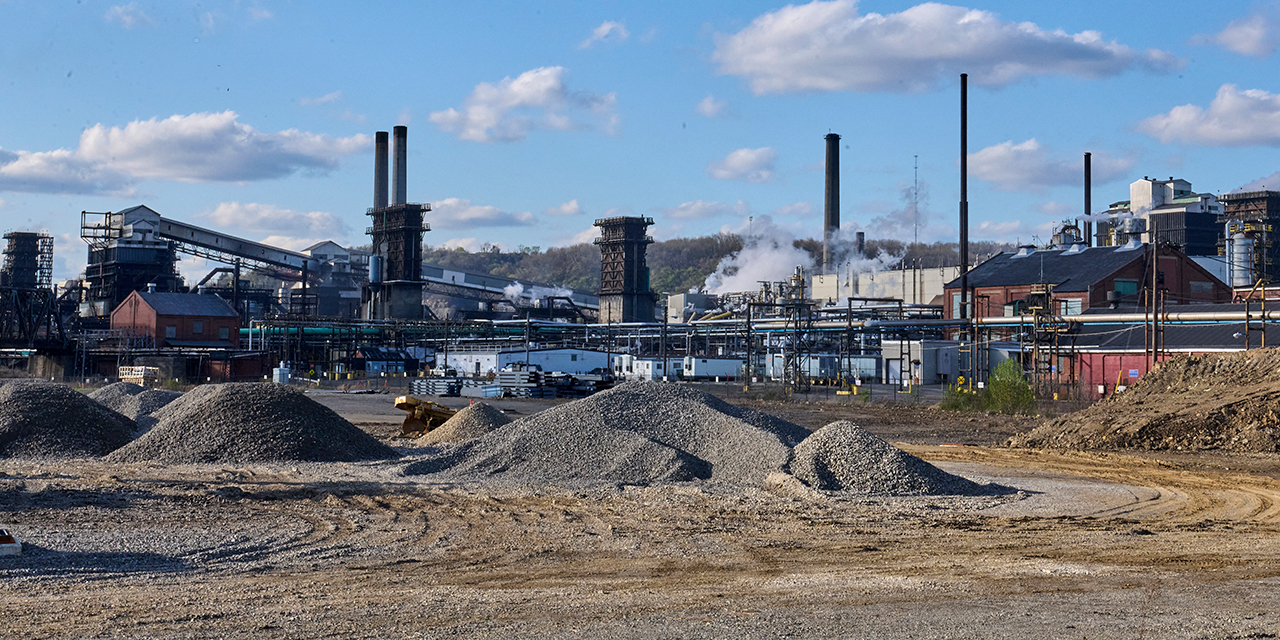
It may seem nearly impossible to sort the signal from the noise surrounding the current attempts to use tariffs to reshore American manufacturing. But given the stakes, it’s worth examining some underlying facts and persistent myths.
Start with the most significant factor hobbling America’s once-mighty manufacturing machine: the relentless expansion of the regulatory state. To borrow Pogo cartoonist Walt Kelly’s famous line, “We have met the enemy, and he is us.” The growth of regulation has had a far greater impact than taxes or tariffs—though both matter as well.
Finally, a reason to check your email.
Sign up for our free newsletter today.
Countless papers and books have been written about the regulatory state. Back in 2017, I published a Manhattan Institute paper titled, “Prometheus Bound: How Regulations Stifle a U.S. Manufacturing Renaissance,” which concluded:
There are obstacles standing in the way of a manufacturing revival. High corporate taxes are one, and unfavorable trade deals are another. But the biggest single drag on U.S. manufacturing has been the decades-long encroachment of the regulatory state—with an army today of 300,000 regulators and an annual budget of $60 billion.
Complying with regulations costs manufacturers an average of $20,000 per employee per year, twice as great a burden as for other businesses. For the smallest manufacturers (i.e., those with fewer than 50 employees), that annual cost is $35,000 per employee per year. In surveys, America’s manufacturers routinely rank regulatory burdens as the top impediment to growth; a large majority also say that regulatory burdens are higher in America than in other nations.
Since then, the federal regulatory army has continued to expand, with an annual budget now exceeding $80 billion. Over the past eight years, federal agencies have imposed some 550 major new rules—each carrying an estimated economic cost of more than $100 million per year. Do the math: that amounts to $60 billion in added annual non-productive costs since 2017. And that’s not counting the countless smaller, “Lilliputian” regulations that fall below the statutory threshold of “economically significant”—i.e., those with compliance costs under $100 million.
As for the key bottom line in that 2017 paper, the latest National Association of Manufacturers report finds that complying with federal regulations now costs $29,100 for large companies and $50,100 for small firms—per employee, per year. Tomorrow’s large firms start as small ones, and over 90 percent of manufacturers are small firms that account for 40 percent of manufacturing employment.
No one can credibly argue that this staggering regulatory encroachment was necessary because American manufacturing resembled a Dickensian nightmare a couple of decades ago. Reliable data on regulatory costs in China don’t exist, but the figure is almost certainly closer to zero than to $50,000 per employee, per year. This stunning burden makes clear that it’s not just wages that disadvantage U.S. manufacturers—it’s the regulatory costs attached to that labor.
Many pundits claim that the decline in manufacturing employment is mainly the result of automation: blame robots, not regulators. The facts don’t support that claim.
It’s true, of course, that rising productivity—more output with fewer inputs of labor, materials, and energy—is a core feature of economic progress. From 1950 to 2000, the data show, manufacturing productivity rose over six-fold, meaning that one-sixth as many workers could produce the same output. Despite these dramatic gains in productivity, total manufacturing employment actually increased modestly—by about 15 percent during the 1960s—and then remained relatively stable through 2000. In other words, more goods were produced, at lower cost, to meet rising demand from an increasingly wealthy and growing population.
Then, around the turn of the century, came the one-two punch of the rise of a powerful competitor—China—and the self-inflicted wounds of ever-more regulation. Rather than making it easier for American industry to compete, the federal government made it significantly harder.
Counted from the year 2000, the federal government has added more than 1,400 new “economically significant rules” that work to hobble American businesses—that’s over double the number of rules added from 1980 to 2000. Is it any wonder that U.S. manufacturing output has flatlined and the labor force shrunk?
Observers point out that the American economy continued to grow despite the government’s hobbling of U.S. manufacturing—which it did. They also note that communities hit by factory closures have largely recovered in terms of official unemployment statistics—which they have. But that’s not the whole story. In a 2025 National Bureau of Economic Research paper, MIT economist David Autor and his co-authors analyze a massive county-by-county dataset to assess the impact of factory closings.
Their study begins by recalling the conventional economic wisdom around 2000: “the mobility of labor between sectors and regions would diffuse the shock across local labor markets, dampening its place-specific effects” (emphasis added). But that didn’t happen: “We now know that trade shocks caused more intense pain than anticipated in regions specialized in manufacturing. . . . While trade-exposed places more than fully recover all employment losses after 2010, trade-exposed workers on average do not.” In other words, factory workers remained unemployed, while new labor-market entrants found jobs in relatively lower-wage service sectors such as medical services, education, retail, and hospitality.
This transformation was consequential both economically and politically. Since 2000, the U.S. has lost roughly 3 million manufacturing jobs, many concentrated in “flyover country.” Politically, the impact went beyond those directly displaced: factory workers have families, friends—and they vote. Economically, manufacturing jobs have a multiplier effect two to three times greater than that of service-sector jobs. In other words, the economy suffered twice: first from the loss of high-wage industrial employees, and then from the broader decline due to an enervated manufacturing sector. Storied tech entrepreneurs from Ross Perot to Andy Grove to Steve Jobs, warned long ago that domestic manufacturing capabilities are integral to innovation itself.
Consider a thought experiment: if the U.S. had prevented the erosion of, say, one-half of the decline in its share of global manufacturing since 2000, our domestic manufacturing sector would be more than $1 trillion larger. The data show that even a more conservative estimation of the effect of halving the decline would roughly wipe out the trade deficit.
Moreover, without the crush of new federal regulations, businesses could have spent those hundreds of billions in compliance costs on new technology. (Excessive regulation tends to lock-in outdated tech.) That investment in turn would have boosted growth in manufacturing productivity. Had productivity growth remained at its long-run average, output would have risen, and the U.S. would likely have retained roughly 2 million of the 3 million manufacturing jobs lost since 2000. (Some productivity-driven job loss would still have been inevitable.) The trends from 1950 to 2000 illustrate exactly this pattern.
Some argue that bringing factories back to the U.S.—by whatever means—won’t revive factory employment, either because we lack enough skilled workers or because robots will take over most of the jobs.
But recent trends suggest otherwise. Prospective workers increasingly recognize that industry offers high-paying, non-college jobs accessible through low-cost training. The number of active apprenticeships has doubled over the past nine years, and high schools are experiencing a resurgence in shop classes.
As for robots—both physical and virtual (AI)—today’s automation still has a long way to go to match the six-fold productivity gains achieved through traditional automation in the second half of the twentieth century. When it does—and it will—the impact will follow the same pattern noted above.
Even as other nations inevitably expand their manufacturing sectors, global demand remains insatiable, leaving ample room for U.S. manufacturing to grow. Unlike food or shelter—where demand is ultimately constrained by population—there is no foreseeable limit to the global appetite for manufactured goods. The sky’s the limit when it comes to demand for new products (and, by extension, services). Nor are there technological, resource, or labor-related reasons preventing the U.S. from capturing a significant and growing share of that demand. It’s the regulatory state that is the primary impediment to creating those jobs, capturing the innovation synergies, and helping to reduce our trade deficit.
But whether a trade deficit in goods is financially significant—and some smart observers, like storied investor Ken Fisher, argue that it’s not—it’s how we got there that matters.
The key issue with our trade deficit in manufactured goods is what it reveals about a deeper structural problem: the erosion, and in some cases disappearance, of U.S. capabilities to produce critical products and technologies—from chips to ships, and from mineral refineries to pharmaceutical precursors. The U.S. doesn’t need to manufacture everything it consumes, but it does need the capacity to produce substantial shares across key industries, not least those tied to defense and national security.
What eludes the bureaucratic mind is the symbiotic nature of the industrial and service sectors. Obviously, ships must be built to make shipping services possible. Similarly, AI chips and massive data centers must be fabricated to provide the “digital services” where the U.S. holds a substantial trade surplus. That fabrication, in turn, depends on other industries—particularly those that supply all the critical minerals that are difficult to mine, and even harder to refine.
And in the context of current trade anxieties, it’s worth noting that the U.S. is 100 percent dependent on imports for some 20 refined critical minerals. As with manufacturing, this vulnerability is largely self-inflicted. China is the OPEC of mineral refining—and in the geopolitics of trade, that’s called leverage. China is now deploying that leverage, recently announcing that it will restrict exports of some key minerals (essential for many tech products).
Walter Wriston, former CEO of Citicorp and one of the most influential bankers of the late twentieth century, famously said that “capital goes where it’s welcome and stays where it’s well treated.” Well, you can substitute the word “manufacturing” for the word “capital.” After decades of crushing regulation, the jury is also out on whether President Trump’s “Hail Mary” assault on the regulatory state will happen, or work.
Photo by DOMINIC GWINN/Middle East Images/AFP via Getty Images
Source link


















